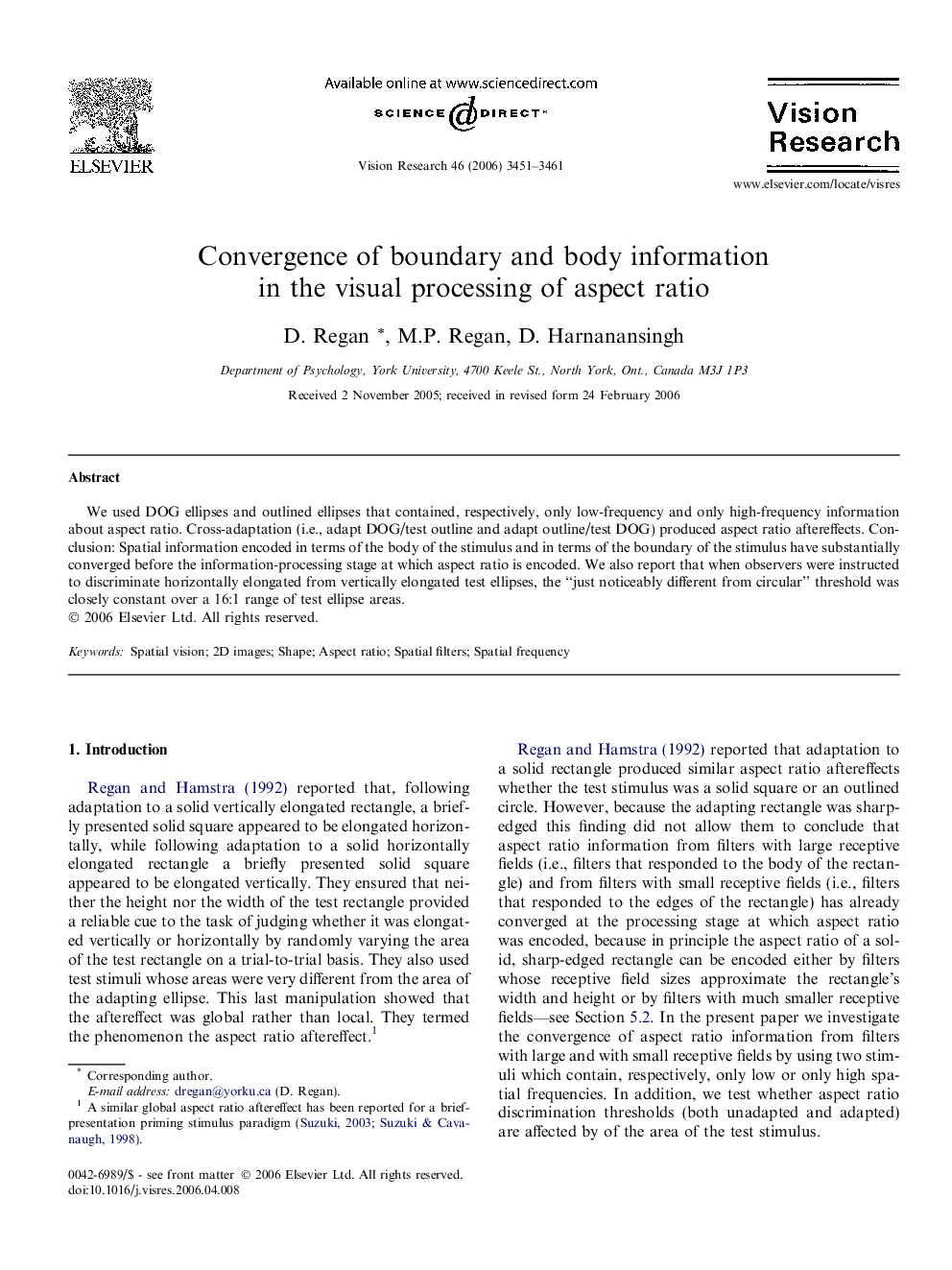| Article ID | Journal | Published Year | Pages | File Type |
|---|---|---|---|---|
| 4035993 | Vision Research | 2006 | 11 Pages |
Abstract
We used DOG ellipses and outlined ellipses that contained, respectively, only low-frequency and only high-frequency information about aspect ratio. Cross-adaptation (i.e., adapt DOG/test outline and adapt outline/test DOG) produced aspect ratio aftereffects. Conclusion: Spatial information encoded in terms of the body of the stimulus and in terms of the boundary of the stimulus have substantially converged before the information-processing stage at which aspect ratio is encoded. We also report that when observers were instructed to discriminate horizontally elongated from vertically elongated test ellipses, the “just noticeably different from circular” threshold was closely constant over a 16:1 range of test ellipse areas.
Related Topics
Life Sciences
Neuroscience
Sensory Systems
Authors
D. Regan, M.P. Regan, D. Harnanansingh,
